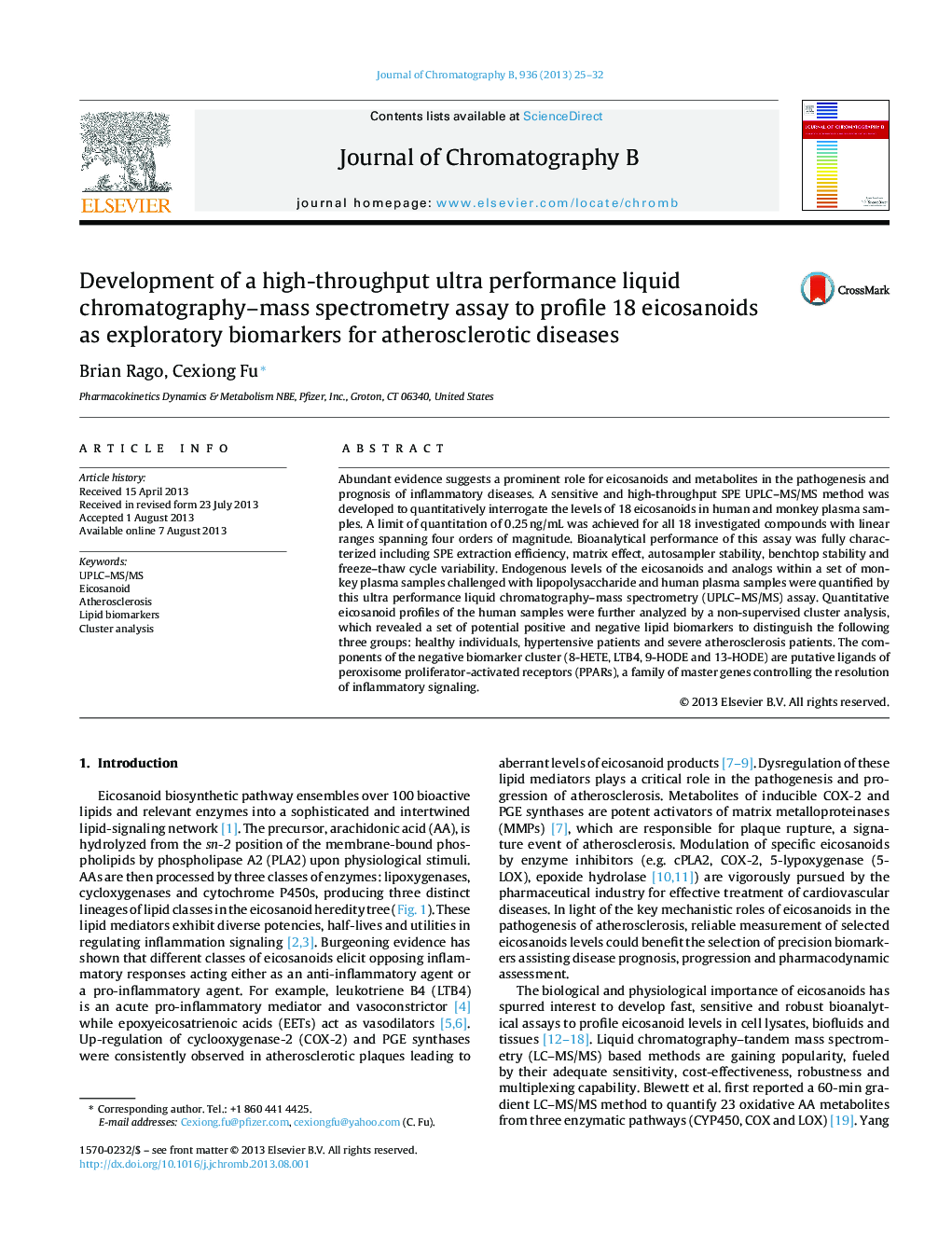| Article ID | Journal | Published Year | Pages | File Type |
|---|---|---|---|---|
| 1216527 | Journal of Chromatography B | 2013 | 8 Pages |
•Development and optimization of a fast UPLC–MS/MS method to quantify 18 eicosanoids in plasma samples.•Application of this assay to profile essential eicosanoid levels in pre-clinical and clinical samples.•Employed a multivariate cluster analysis to identify sets of potential positive and negative lipid biomarkers to stratify patient population.
Abundant evidence suggests a prominent role for eicosanoids and metabolites in the pathogenesis and prognosis of inflammatory diseases. A sensitive and high-throughput SPE UPLC–MS/MS method was developed to quantitatively interrogate the levels of 18 eicosanoids in human and monkey plasma samples. A limit of quantitation of 0.25 ng/mL was achieved for all 18 investigated compounds with linear ranges spanning four orders of magnitude. Bioanalytical performance of this assay was fully characterized including SPE extraction efficiency, matrix effect, autosampler stability, benchtop stability and freeze–thaw cycle variability. Endogenous levels of the eicosanoids and analogs within a set of monkey plasma samples challenged with lipopolysaccharide and human plasma samples were quantified by this ultra performance liquid chromatography–mass spectrometry (UPLC–MS/MS) assay. Quantitative eicosanoid profiles of the human samples were further analyzed by a non-supervised cluster analysis, which revealed a set of potential positive and negative lipid biomarkers to distinguish the following three groups: healthy individuals, hypertensive patients and severe atherosclerosis patients. The components of the negative biomarker cluster (8-HETE, LTB4, 9-HODE and 13-HODE) are putative ligands of peroxisome proliferator-activated receptors (PPARs), a family of master genes controlling the resolution of inflammatory signaling.
